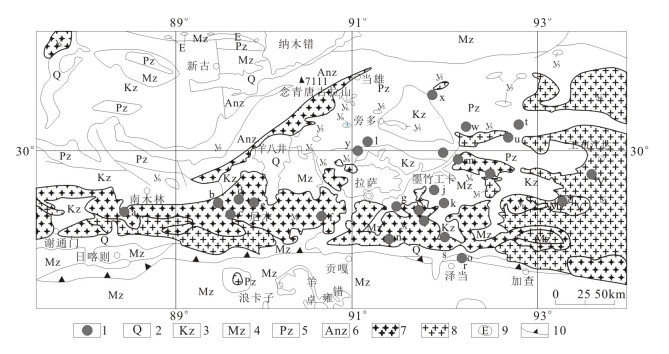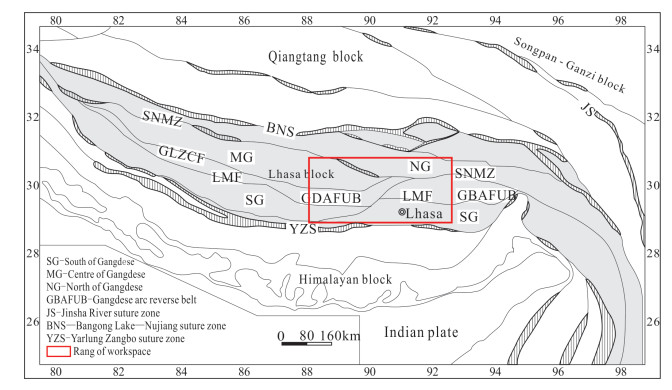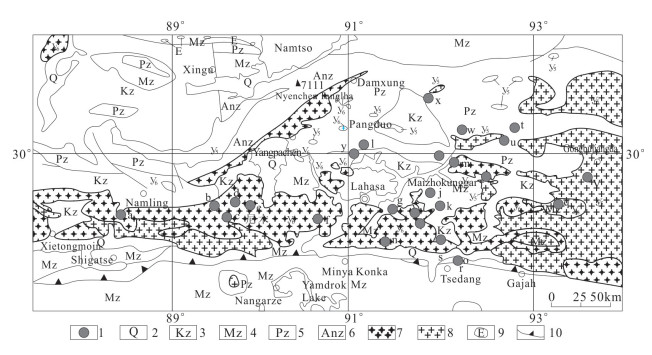Lithogeochemical and Chronological Test Dataset of Mesozoic and Cenozoic Porphyry Metallogenic System in the Eastern Section of the Gangdise Metallogenic Belt, Xizang
-
摘要:
西藏冈底斯成矿带东段中—新生代斑岩成矿系统岩石地球化学测试数据集基于冈底斯成矿带地质矿产调查项目“西藏冈底斯东段中新生代斑岩成矿系统与找矿预测”资助,进行岩石测试分析整理而得。岩石地球化学与地质年代学数据可以全面地反映岩石与矿床成因、成岩与成矿年龄等重要信息,为西藏冈底斯成矿带东段中、新生代斑岩矿床成矿背景与成矿模式研究提供科学依据和基础数据支撑。本数据集为Excel表格型数据,包括3个.xlsx类型文件(majorelement_Gangdise.xlsx,traceelement_Gangdise.xlsx,reos-upb_Gangdise)分别记录主量、微量、测年数据,其中majorelement_Gangdise.xlsx包含141条记录和105个字段,traceelement_Gangdise.xlsx包含273条记录和166个字段,reos-upb_Gangdise包含208条记录和100个字段。其中,主量、微量元素数据涉及与邦铺、达布、程巴、甲玛4个矿床有关的5个岩体。测年数据包括邦铺钼多金属矿床黑云母二长花岗岩等4组锆石U-Pb年龄数据,达布铜(钼)花岗岩体等3组锆石U-Pb年龄数据,甲玛铜多金属矿床5组Re-Os年龄数据,邦铺钼多金属矿床2组Re-Os年龄数据。本库提供全部测试均在国家知名测试数据实验室进行,数据质量可靠。
Abstract:The data base for the ore-Cenozoic porphyry metallogenic system in the eastern section of the Gangdise metallogenic belt, Xizang is supported by the Gangdise Metallogenic Belt Geology Mineral Survey Project. Data from petrogeochemistry and geochronology can reflect the genesis of rocks and deposits and the age of diagenesis and mineralization, which will provide a scientific basis and basic knowledge on the metallogenic background and mode of the Mesozoic-Cenozoic porphyry deposit. The data base is conducted in Excel, and includes three.xlsx files recording major, trace and age data:majorelement_Gangdise.xlsx includes 141 records and 105 fields; traceelement_Gangdise.xlsx includes 273 records and 166 fields; U-Pb and Re-Os isotope geochrondogy-Gangdise includes 208 records and 100 fields. The data about major and trace elements involves five rock masses related to Bangpu, Dabu, Chengba, and Jiama deposits. The dating data includes four groups of zircon U-Pb age data of a biotite adamellite in the Bangpu molybdenum polymetallic deposit, three groups of zircon U-Pb age data of a granitic pluton in the Dabu copper-molybdenum deposit, five groups of Re-Os age data in the Jiama copper polymetallic deposit, and two groups of Re-Os age data in the Bangpu molybdenum polymetallic deposit. The data provided by the base were carried out in a well-known national test data laboratory, and thus data quality is reliable.
-

-
图 1 冈底斯成矿带大地构造位置略图(据朱弟成等, 2008; 曹圣华等, 2012修改)
表 1 数据库(集)元数据简表
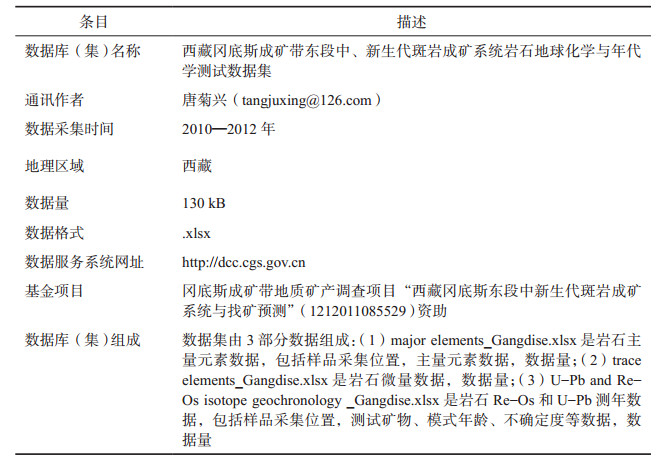
表 2 岩石主量元素数据数据表
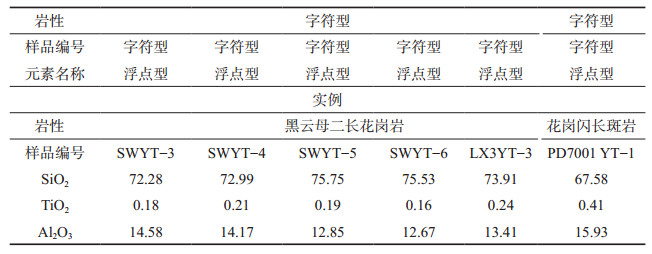
表 3 岩石微量数据数据表
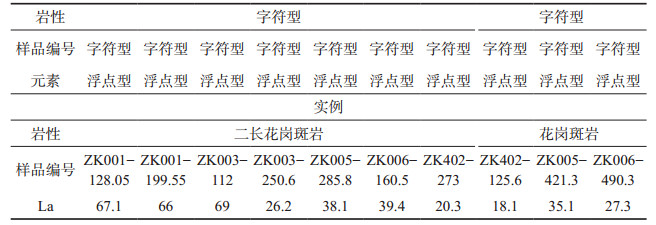
表 4 岩石Re-Os测年数据表

Table 1. Metadata table of dataset(s)
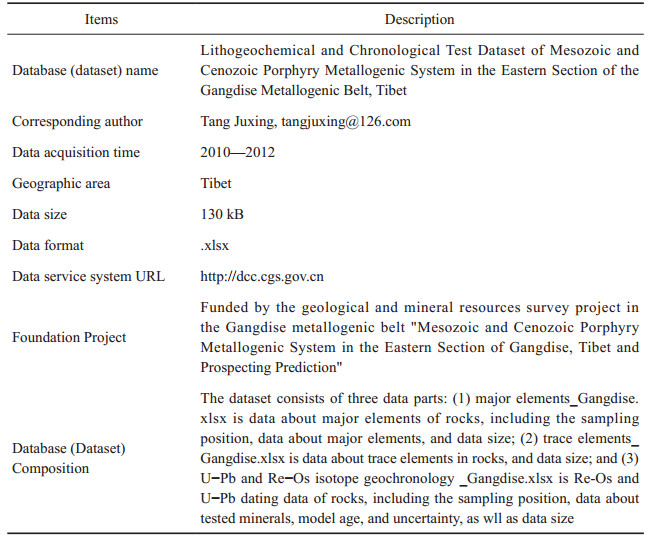
Table 2. The data table contents of major element_Gangdise
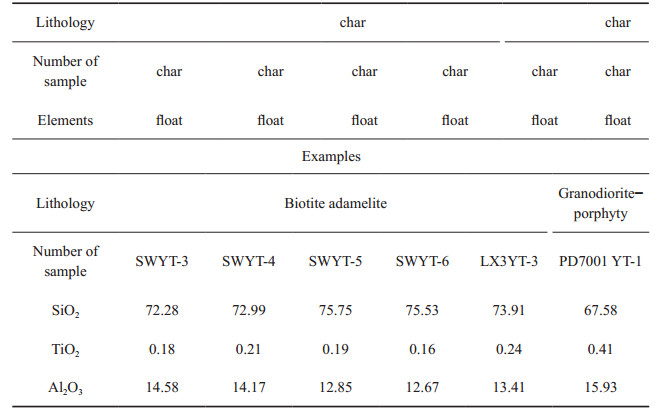
Table 3. The data table contents of trace element_Gangdise
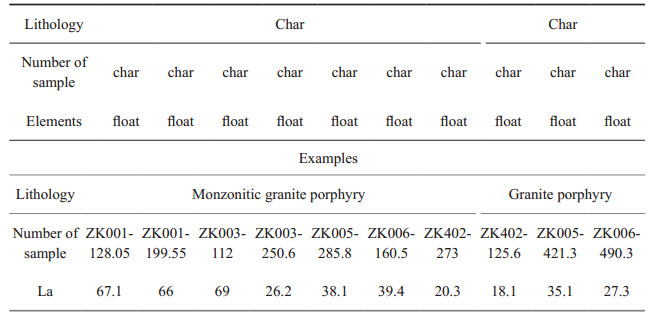
Table 4. The data table contents of Re-Os isotope geochronology_Gangdise
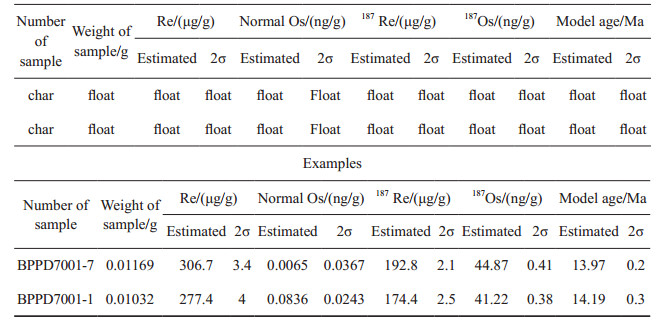
-
曹圣华. 2012. 西藏尼雄式铁矿及冈底斯中部铁铜矿区域成矿规律研究[D]. 北京: 中国地质大学(北京)博士论文, 12-27.
http://cdmd.cnki.com.cn/article/cdmd-11415-1012364483.htm 任金卫, 沈军, 曹忠权, 汪一鹏.2000.西藏东南部嘉黎断裂新知[J].地震地质, 22(4):334-350. http://kns.cnki.net/KCMS/detail/detail.aspx?filename=dzdz200004001&dbname=CJFD&dbcode=CJFQ
杨德明, 和钟铧. 2004. 西藏1: 25万门巴区幅区调报告[R]. 吉林大学地质调查院.
叶培盛. 2004. 拉萨地块中部蛇绿岩与逆冲推覆构造[D]. 北京: 中国地质科学院博士学位论文, 63-104.
http://cdmd.cnki.com.cn/Article/CDMD-82501-2007213421.htm 袁万明, 侯增谦, 李胜荣, 王世成.2002.雅鲁藏布江逆冲带活动的裂变径迹定年证据[J].科学通报, 47(2):147-149. https://wuxizazhi.cnki.net/qikan-HJSU200206009.html
翟文建, 崔霄峰, 岳国利, 杜欣, 王琰, 陈志敏, 苏建仓.2012.西藏扎雪-门巴韧性剪切带变形时代及机制研究:来自同构造花岗岩体的证据[J].大地构造与成矿学, 36(2):149-156. http://kns.cnki.net/KCMS/detail/detail.aspx?filename=dgyk201202003&dbname=CJFD&dbcode=CJFQ
张认, 和钟铧.2007.西藏冈底斯带扎雪-门巴韧性变形带形成时代及构造背景[J].沉积与特提斯地质, 27(1):19-24. http://kns.cnki.net/KCMS/detail/detail.aspx?filename=ttsd200701003&dbname=CJFD&dbcode=CJFQ
朱弟成, 潘桂棠, 王立全, 莫宣学, 赵志丹, 周长勇, 廖忠礼, 董国臣, 袁四化.2008.西藏冈底斯带中生代岩浆岩的时空分布和相关问题的讨论[J].地质通报, 27(9):1535-1550. http://kns.cnki.net/KCMS/detail/detail.aspx?filename=zqyd200809015&dbname=CJFD&dbcode=CJFQ
Cao Shenghua. 2012. Study on Regional Metallogenic Regularity of Iron Ore Deposit in the Central Iron Ore Deposit of Nixiong and Gangdise in Xizang[D]. Beijing: China University of Geosciences, 12-27(in Chinese with English abstract).
Ren Jinwei, Shen Jun, Cao Zhongquan, Wang Yipeng.2000.Quaternary faulting of Jiali Fault, southeast Xizang plateau[J].Seismology and Geology, 22(4):334-350(in Chinese with English abstract). http://en.cnki.com.cn/Article_en/CJFDTOTAL-DZDZ200004001.htm
Yang Deming, He Zhonghua. 2004. The Report on the Area of 1: 250, 000 about Menba in Xizang[R]. Geological Survey Institute of Jilin University (in Chinese).
Ye Peisheng. 2004. Ophiolites and Thrust System of Middle Lhasa Block[D]. Beijing: Chinese Academy of Geological Sciences, 63-104(in Chinese with English abstract).
Yuan Wanming, Hou Zengqian, Li Shengrong, Wang Shicheng.2002.Fission track dating evidence on thrust belt activity of the Yarlung Zangbo River[J].Chinese Science Bulletin, 47(2):147-149(in Chinese with English abstract). https://www.researchgate.net/publication/227122151_Apatite_fission_track_dating_evidence_on_the_tectonization_of_Gangdese_block_south_Qinghai-Tibetan_Plateau
Zhai Wenjian, Cui Xiaofeng, Yue Guoli, Du Xin, Wang Yan, Chen Zhimin, Su Jiancang.2012.Age and Genetic mechanism of the Zhaxue-Menba shear zone in Xizang:Evidence from the synorogenic granites[J].Geotectonica et Metallogenia, 36(2):149-156(in Chinese with English abstract). http://en.cnki.com.cn/Article_en/CJFDTotal-DGYK201202003.htm
Zhang Ren, He Zhonghua.2007.The ages and tectonic setting of the Zhaxue-Menba ductile shear zone in the Gangdise orogenic belt, Xizang[J].Sedimentary Geology and Tethyan Geology, 27(1):19-24(in Chinese with English abstract). http://en.cnki.com.cn/Article_en/CJFDTOTAL-TTSD200701003.htm
Zhu Dicheng, Pan Guitang, Wang Liquan, Mo Xuanxue, Zhao Zhidan, Zhou Changyong, Liao Zhongli, Dong Guochen, Yuan Sihua.2008.Tempo-spatial variations of Mesozoic magnmtic rocks in the Gangdise bell Xizang, China, with a discussion of geodyrmmic setting-related issues[J].Geological Bulletin of China, 27(9):1535-1550(in Chinese with English abstract).
-



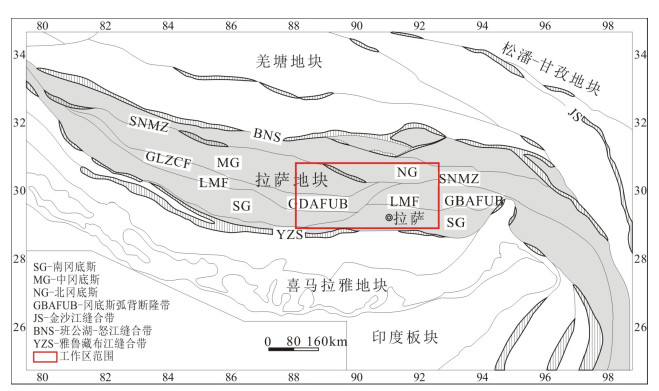
 下载:
下载:
